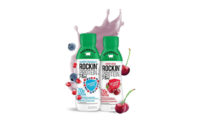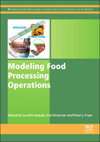Consumer trends affect processing equipment choices
Your R&D lab might be developing the foods consumers want, but does your plant have the right processing and packaging equipment?
A new report sponsored by packaging associations found that consumers’ focus on wellness, environmental impact and macroeconomic factors (such as the growth of the middle class) are shaping the global packaging market. These trends impact the types of equipment sourced by consumer packaged goods companies.
Along with CPGs asking for minimal and less packaging waste, increases in the price of virgin materials are driving demand for recycled materials. Flexible packaging is growing due to recyclability, affordability, lightweight and growth in packaged foods overall.
“With the growth of flexible packaging, we are seeing additional demand for filling and closing machines able to handle this type of packaging material,” said Charles D. Yuska, president and CEO of PMMI, The Association for Packaging and Processing Technologies, Reston, Va. “The increased focus on sustainability drives the growing demand for more energy-efficient machines.”
The trends are highlighted in the “2017 Global Packaging Trends” report produced by Euromonitor and sponsored by PMMI and other international packaging associations. The report was released in May at the Interpack trade show in Düsseldorf, Germany.
In North America, the report states that HDPE bottles are the leading packaging type in the dairy category. But it projects that these bottles will lose share to PET bottles and cartons. The report concludes that shaped cartons for liquid dairy products will see significant growth due to their “natural and environmental feel.” PET bottles allow for nontraditional milk products to differentiate themselves on shelves.
Yuska said global consumer demand for healthier foods is the impetus towards fresher food, clean labeling and organic products.
In order to meet evolving customer wants, many food manufacturers are looking to new technology, such as high pressure processing (HPP) to extend shelf life. To help advance this technology, the Cold Pressure Council, convened by PMMI, is focused on the progression of HPP as a critical technology in the food and beverage industry.
“Consumer purchasing preferences are also changing,” Yuska said. “Online food sales are growing rapidly, a trend reinforced by the growing use of mobile phones and shopping applications.”
Consumers are willing to pay more for products that are locally sourced, produced with quality ingredients and resonate as authentic. This trend has fueled the need for increasingly flexible equipment that can handle shorter runs and more frequent changeovers, according to the trends report.
Looking for a reprint of this article?
From high-res PDFs to custom plaques, order your copy today!








